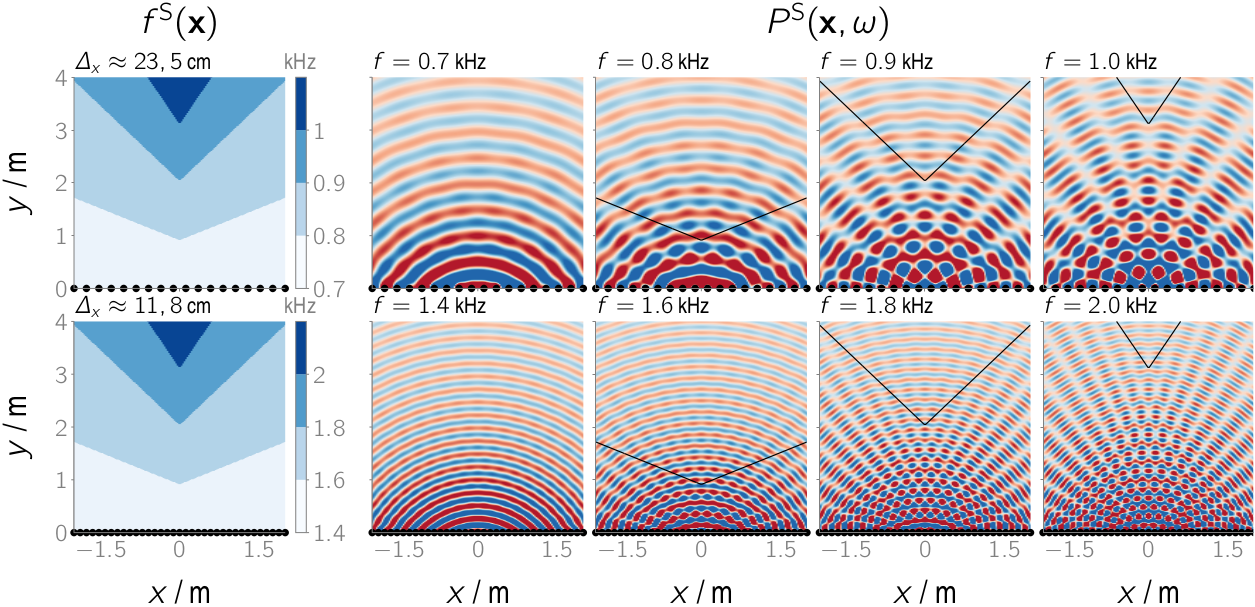At the 44th German Annual Conference on Acoustics (DAGA) we presented the contribution:
Winter, F.; Ahrens, J.; Spors, S. (2018): “A Geometric Model for Spatial Aliasing in Wave Field Synthesis.” In: German Annual Conference on Acoustics (DAGA).
The poster and additional material can be found here.
Abstract:
Wave Field Synthesis aims at a physically accurate synthesis of a desired sound field inside a target region. Typically, the region is surrounded by a finite number of discrete loudspeakers. For practical loudspeaker setups, this spatial sampling causes spatial aliasing artefacts and does not allow for an accurate synthesis over the entire audible frequency range. In the past, different theoretical treatises of the spatial sampling process for simple loudspeaker geometries, e.g. lines and circles, led to anti-aliasing criteria independent of listener’s position inside a target region. However, no inference about the spatial phenotype of the aliasing artefacts could be made by this models. This work presents a geometrical model based on high-frequency approximations of the underlying theory to describe the spatial occurrence and the propagation direction of the additional wave fronts caused by spatial aliasing. Combined with a ray-tracing algorithm, it can be used to predict position-dependent spatial aliasing artefacts for any convex loudspeaker geometry.



